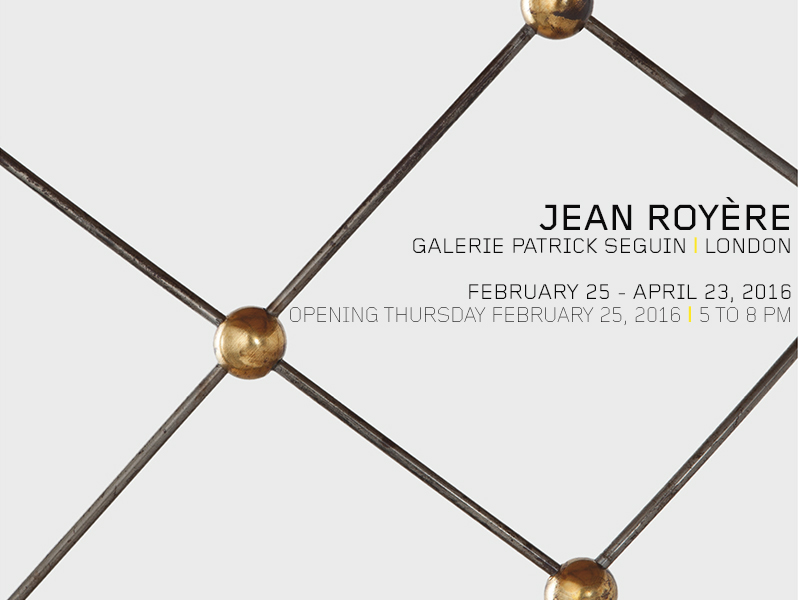
Following the inaugural show Petites Machines d’Architecture dedicated to Jean Prouvé’s demountable architecture, the gallery continues to uphold its mission with an exhibition devoted to the work of designer Jean Royère.
PRESS RELEASE


Galerie Patrick Seguin whishes you happy holidays!
The Paris gallery will be closed on December 25th, 2015 and January 1st, 2016.
The London gallery will be closed on December 24th, 25th, 26th, 31st, 2015 and January 1st and 2nd, 2016.
These artists have all contributed to the discourse of contemporary art with their use of new or unconventional materials, techniques and forms. The artists are brought together because of the interest and tastes of the gallery’s owners; the unifying conditions of this group are the presence of a sophisticated visual language and conceptual rigor.
Luhring Augustine was founded in 1985 by Lawrence Luhring and Roland Augustine and since its early days has been at the center of the New York art world; conceptually by being the first to show many artists who have grown to become widely recognized, and physically from its founding location in the Fuller Building on 57th Street in Manhattan, to its tenure in Soho through the 1990s. Luhring Augustine was among the first galleries to open a gallery in Chelsea at the end of the 1990s and recently opened a second space in Bushwick, Brooklyn.
Since its inception the gallery has represented an international roster of artists whose practices are characterized by innovation in their chosen media, a dialogue with their historical antecedents and resonant influence over a younger generation of artists.
This exhibition is the latest in a series of annual shows at Galerie Patrick Seguin entitled « Carte Blanche », for which international galleries are invited to organize exhibitions.
Since 2002 the gallery invited 9 international galleries to exhibit: Jablonka Galerie (2002), Hauser & Wirth (2003), Gagosian Gallery (“Richard Prince” in 2008), Eva Presenhuber (2009), Sadie Coles HQ (2010), Galleria Massimo De Carlo (2011), Paula Cooper Gallery (2012), Gagosian Gallery (Calder/Prouvé in 2013), kurimanzutto (2014).